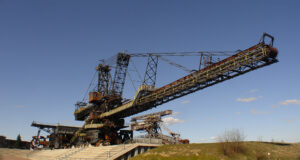Silicosis remains a major health risk for miners, caused by prolonged inhalation of respirable crystalline silica. This chronic lung disease can be devastating, yet it is largely preventable with proper dust control measures and early intervention. In this article, we’ll explore the dangers of silicosis—its causes, symptoms, and the urgent need for prevention and early detection in the mining industry.
What is Silicosis?
Silicosis is an irreversible lung disease caused by the inhalation of fine respirable crystalline silica dust, often found in materials such as rock and ore that are common in mining operations. When miners breathe in these tiny particles, the dust becomes trapped in the lungs and causes inflammation. Over time, the inflammation leads to scar tissue formation, which impairs lung function and may cause chronic breathing difficulties.
The most severe form of silicosis, known as “progressive massive fibrosis” (PMF), can lead to respiratory failure and death. The long-term nature of this disease makes it a particularly insidious threat in mining environments where silica dust is present in high concentrations.
The Dangers of Silicosis: Who’s at Risk?
Miners are at the highest risk for developing silicosis, especially those who work in environments with poor dust control or inadequate protective measures. Tasks like drilling, blasting, and crushing rock materials create fine dust particles that are easily inhaled.

Certain factors contribute to the severity of exposure:
- Duration and intensity of exposure: Miners who have spent many years working in high-dust environments are at a greater risk of developing silicosis, even if dust control measures are now in place.
- Pre-existing conditions: Workers with chronic respiratory issues or those who smoke may experience more severe symptoms when exposed to silica dust.
- Working environment: Confined underground spaces or open-pit operations in dry conditions often have higher dust levels, increasing the risk of exposure.
Health Impacts: The Silent Toll of Silicosis
In its early stages, silicosis can cause mild symptoms such as coughing, shortness of breath, and chest pain. However, as the disease progresses, the lungs become more severely scarred, leading to worsening respiratory issues, frequent infections, and eventually respiratory failure.
This chronic condition can significantly impact a miner’s quality of life, making it difficult to perform daily tasks, let alone continue working in physically demanding environments. Early detection is critical for slowing the disease’s progression and improving the chances of successful intervention.
Preventing Silicosis: A Multi-Pronged Approach
Although silicosis is a serious threat, it is largely preventable with a comprehensive approach to silica dust management. The MSHA and other health organizations recommend a combination of engineering controls, PPE, administrative measures, and health monitoring to protect miners from silica exposure.
Engineering Controls:
- Dust suppression systems: Use water sprays, foams, and chemical agents to minimize dust generation during operations.
- Ventilation: Ensure adequate ventilation, both general and local, to dilute and remove airborne dust.
- Enclosed equipment: Equip machines with enclosed cabs and high-efficiency filters to protect workers from inhaling silica dust.
Personal Protective Equipment (PPE):
- Respirators: Provide HEPA-filtered respirators to miners to prevent inhalation of silica dust.
- Protective clothing: Use dust-resistant clothing to minimize skin contact with silica particles.
Administrative Controls:
- Work procedures: Implement strategies to reduce dust exposure, such as wet methods and limiting time spent in high-risk areas.
- Regular dust monitoring: Conduct frequent air quality assessments to ensure that silica levels remain within safe limits.

Health Monitoring:
- Regular lung exams: Ensure that miners receive routine health screenings, including chest X-rays and lung function tests, to catch early signs of silicosis.
- Timely intervention: Early detection and medical intervention can slow the disease’s progression and improve outcomes for affected miners.
Supporting Miners Affected by Silicosis
Miners diagnosed with silicosis face not only physical challenges but also financial and emotional burdens. Many may need medical treatment for chronic respiratory issues, and some may be unable to continue working in mining. Legal and financial support, including workers’ compensation and disability claims, are essential resources for miners coping with the long-term effects of silicosis.
By ensuring better prevention, early detection, and support for affected workers, the mining industry can help mitigate the devastating impact of silicosis on miners’ health.

